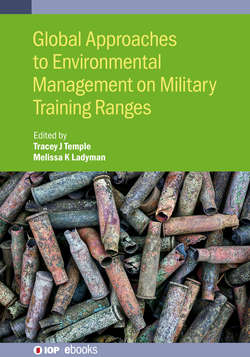Читать книгу Global Approaches to Environmental Management on Military Training Ranges - Tracey Temple - Страница 12
На сайте Литреса книга снята с продажи.
IOP Publishing Global Approaches to Environmental Management on Military Training Ranges Tracey J Temple and Melissa K Ladyman Chapter 1 Scientific principles of environmental management I Bortone, F Coulon, W Fawcett-Hirst, M Ladyman and T Temple
ОглавлениеMilitary training ranges are essential for live-fire training; however, with increasingly stringent environmental legislation it is also necessary to ensure that the environmental impact of live-fire activities is mitigated and managed. The environmental impact of live-fire training includes noise nuisance, heavy metal contamination and land degradation. For a long time it was thought that explosive residue from live-fire training was limited as all materials would be consumed during detonation, but research has shown that a significant amount of explosive residue may be deposited during partial detonations and through unexploded ordnance. In addition, contamination of soil and groundwater resulting from explosive residue deposition at training ranges is now well documented. Therefore, knowledge of the explosives likely to be deposited at training ranges and their behaviour in the environment is essential in order to appropriately mitigate or manage their impact. This chapter outlines how simple conceptual models can be used to summarise the training range environment including soil types, geology, hydro-geology and topography in order to link training activities to potential receptors such as ecosystems, humans and animals. An overview of the impact of commonly used explosives in the environment, and how computational and experimental methods can be used to determine and predict the behaviour of contaminants in the environment is also given.
